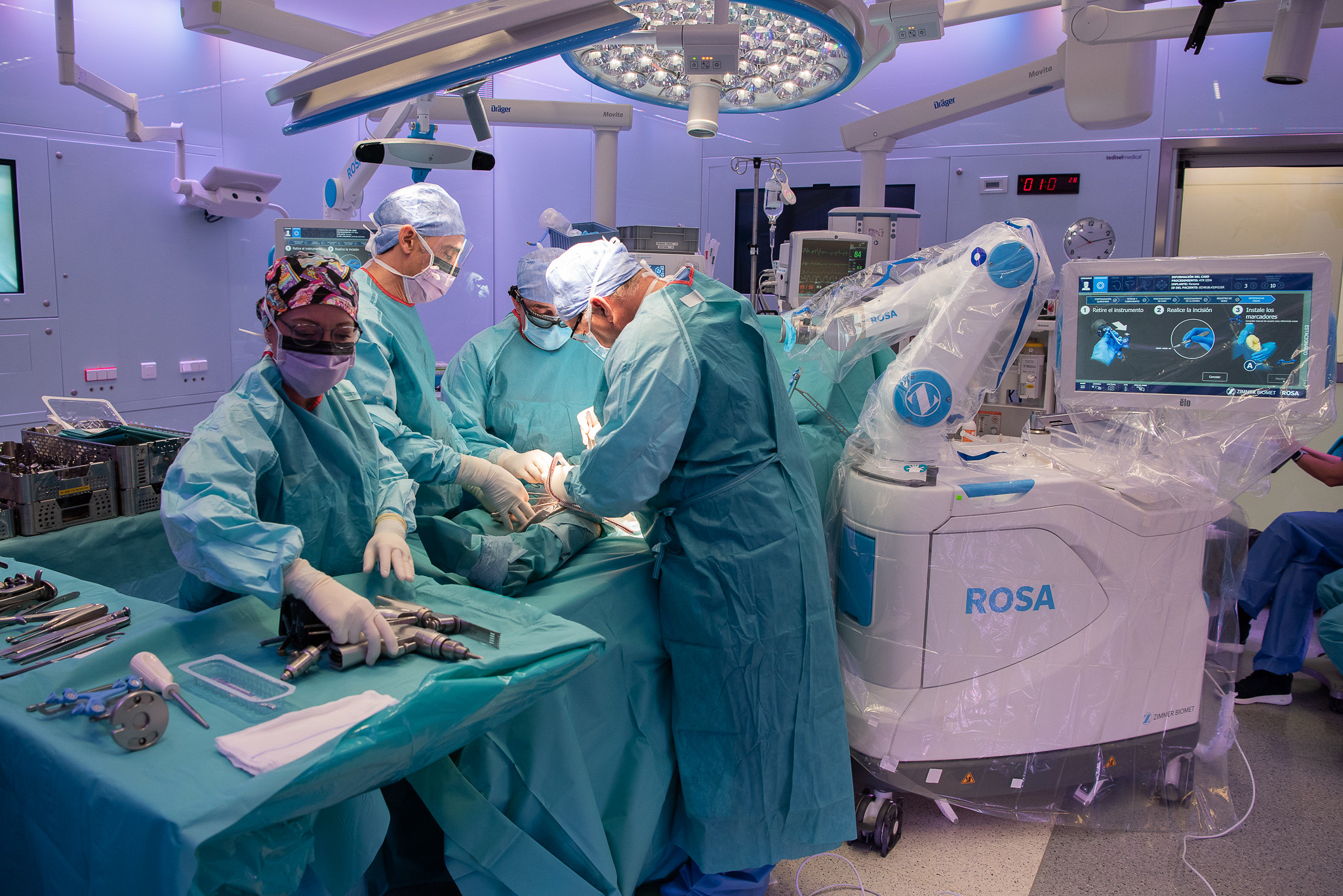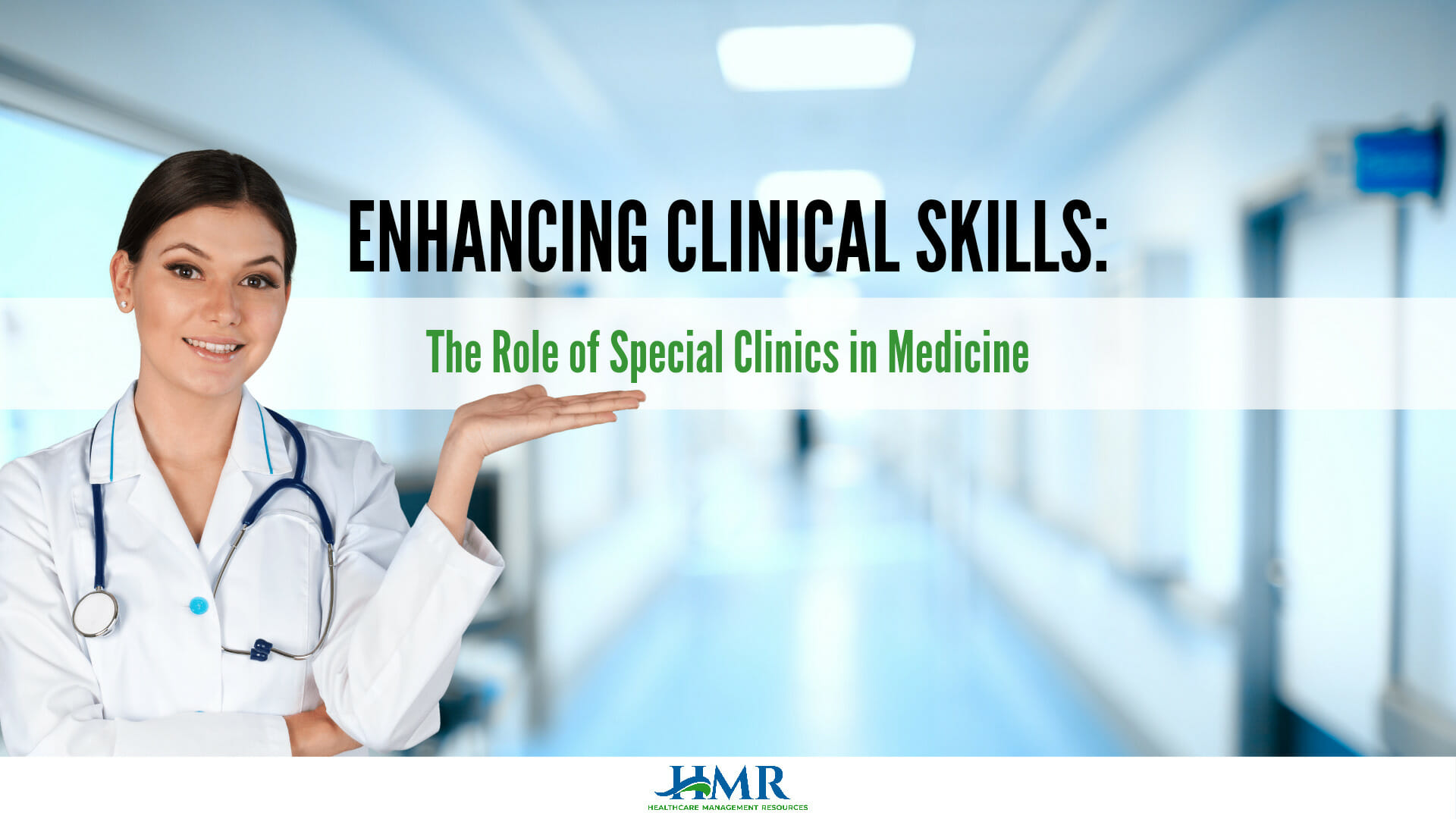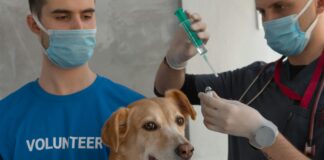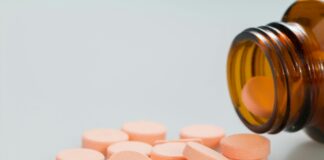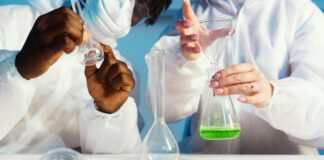Are you wondering what really is clinical depression and how it differs from regular depression? Many people confuse these two terms, but understanding the difference can be a life-changing discovery. Clinical depression, also known as major depressive disorder, is a serious mental health condition that affects millions worldwide, causing persistent feelings of sadness, hopelessness, and loss of interest in daily activities. But did you know that depression symptoms can vary widely from person to person? This makes diagnosing and treating it a complex challenge. Are you curious about the latest depression treatment options and breakthrough therapies that are transforming lives? With rising awareness about mental health, more individuals are seeking answers to questions like “What causes clinical depression?” and “How to manage depression naturally?” In this article, we’ll dive deep into the science behind clinical depression diagnosis, explore effective coping strategies, and reveal powerful tips to help you or your loved ones regain control. Don’t miss out on learning about the newest research in mental health care and how innovations in therapy are providing hope to those struggling with severe depression. Ready to unlock the secrets to better mental well-being? Keep reading to discover everything you need to know about this crucial topic.
What Is Clinical Depression? Understanding the Key Differences From General Depression
Understanding Clinical Depression and Depression: What’s the Real Difference?
So, you’ve heard about clinical depression and just plain old depression thrown around like they’re the same thing, right? Well, not exactly. I mean, they kinda are, but also kinda not. It can gets confusing, and frankly, it makes my head spin sometimes. But hey, let’s try to break it down like a couple of folks chatting over coffee, maybe with some bad grammar thrown in for good measure.
What is Clinical Depression Anyway?
First off, clinical depression (also known as Major Depressive Disorder) is more than just feeling sad because your favorite TV show got cancelled or you missed your bus. This is a serious mental health condition that lasts for weeks, months, or even years if untreated. People with clinical depression often feel hopeless, tired, and — not to be dramatic or anything — like the world is ending. They might lose interest in activities they used to love, have trouble sleeping or eating, and sometimes even think about stuff that no one should have to think about.
| Symptom of Clinical Depression | Description | Duration |
|---|---|---|
| Persistent sadness | Feeling down most of the time | At least 2 weeks |
| Loss of interest | No joy in hobbies or socializing | Weeks to months |
| Sleep problems | Insomnia or oversleeping | Varies |
| Fatigue | Feeling tired even after rest | Persistent |
| Changes in appetite | Eating too much or too little | Weeks |
| Feelings of worthlessness | Harsh self-criticism or guilt | Often persistent |
Not really sure why this matters, but apparently, doctors use these symptoms to diagnose clinical depression, and it’s not just about being a little down on a Monday morning. If you think you got some of these, it’s probably worth talking to someone who knows what they’re doing — which, sadly, is not your cousin who “read a book once.”
Depression: The Everyday Blues or Something More?
Now, the term depression gets tossed around a lot, often by folks who just had a rough day or week. Like, “Ugh, I’m so depressed because I spilled coffee on my shirt.” Okay, we get it, coffee is life, but that’s not the same thing as clinical depression. This kind of depression is more like a feeling. It’s temporary and usually tied to an event or situation. Maybe you lost a job, broke up with someone, or your dog ran away (RIP, Fluffy).
But here’s the catch — sometimes this kind of depression can snowball into something bigger if it’s ignored or untreated. So, it’s kinda like a warning sign from your brain saying, “Hey, maybe slow down and take care of yourself.” But do we listen? Nah, we just scroll through social media and pretend everything’s fine.
How to Tell the Difference?
Honestly, it’s tricky. Here’s a little cheat sheet I put together to help you or your loved ones figure out if it’s just a bad mood or the real deal:
| Feature | Depression (Everyday Blues) | Clinical Depression |
|---|---|---|
| Duration | A few days to a couple of weeks | At least 2 weeks, often much longer |
| Impact on Functioning | Mild, temporary, manageable | Severe, persistent, disrupts daily life |
| Cause | Usually linked to a specific event | Can be triggered by events or none at all |
| Treatment | Self-care, support from friends/family | Professional help, medication, therapy |
Maybe it’s just me, but I feel like people should be a bit more careful when saying they’re “depressed.” It’s not a fashion statement or a way to get sympathy points. It’s serious, and deserves respect.
Practical Insights: Managing Clinical Depression and Depression
Alright, so you or someone you know might be dealing with these feelings. What now? Here are some practical tips that might help, though they’re no substitute for professional help:
- Don’t keep it bottled up: Talk to someone. Friends, family, or a therapist. Sometimes just saying it out loud helps.
- Routine helps: Try to keep a daily schedule. Eat, sleep, move around even when you don’t feel like it.
- Avoid isolation: Yeah, it’s tempting to just stay in bed, but getting out helps more than you think.
- Exercise: Even a little walk can boost your mood (science says so).
- Limit alcohol and drugs: They might seem like a quick fix
10 Proven Natural Remedies to Heal Clinical Depression Without Medication
Understanding Clinical Depression and Depression: What You Really Need to Know
Alright, so let’s talk about clinical depression and just plain ol’ depression — yeah, they sound kinda similar but trust me, they ain’t exactly the same thing. Not really sure why this matters, but people always mix them up like they’re one and the same, which kinda mess up the whole understanding of what’s going on in someone’s head. So, buckle up because we gonna dive into some serious stuff, with a sprinkle of chaos and maybe some grammar slip-ups here and there (because, hey, perfection is overrated).
What is Clinical Depression?
First off, clinical depression (also called major depressive disorder) is like the heavyweight champ of depression. It’s not just feeling sad for a day or two — it’s this deep, long-lasting feeling of hopelessness and misery that can last for weeks, months, or even years sometimes. People suffering from this condition often can’t just “snap out of it,” no matter how many pep talks they get.
| Symptom | Description | Duration |
|---|---|---|
| Persistent sadness | Feeling down almost every day, all day long | At least 2 weeks |
| Loss of interest | No joy in things they usually loved | Consistent during episode |
| Fatigue | Feeling tired even after sleeping | Persistent |
| Changes in appetite | Eating a lot more or a lot less | Variable |
| Trouble concentrating | Difficulty focusing or making decisions | Often present |
Notice how these symptoms aren’t your “I didn’t get enough sleep” kinda deal. They are way more intense and persistent. Also, clinical depression symptoms can vary a lot, so one person might feel super tired, while another might lose their appetite entirely.
Depression: The Broad Term
Now, depression in general is kinda like an umbrella term. It can mean a whole bunch of things — from feeling bummed out after a bad day to something more serious like clinical depression or dysthymia (which is like a milder but longer-lasting depression).
Maybe it’s just me, but I feel like people use the word “depression” so loosely these days that it kinda loses its meaning. Like, “Oh, I’m depressed because my favorite TV show got canceled.” Yeah, sure, that’s sad but it’s not really the same thing as battling with your brain chemistry every day.
Quick Table: Clinical Depression vs Depression
| Aspect | Clinical Depression | General Depression |
|---|---|---|
| Severity | Severe | Mild to moderate |
| Duration | Weeks to months or longer | Can be short-term or chronic |
| Impact on daily life | Significant impairment | Varies, sometimes manageable |
| Treatment necessity | Usually requires professional help | Sometimes resolves without treatment |
Why Does This Even Matter?
You might ask, “Why should I care about the difference?” Well, for starters, recognizing clinical depression early can make a big difference in treatment. It’s not just about “cheer up” or “think positive” — people often need meds, therapy, or a combo of both to get better. And ignoring it or brushing it off might make things worse.
Here’s a practical insight: If you or someone you know is showing signs like these for more than two weeks, it’s a good idea to see a healthcare provider. Don’t wait for things to “get better” on their own because, spoiler alert, they often won’t.
Some Common Myths About Depression (and Why They’re Wrong)
Myth 1: Depression is just sadness.
Truth: Nope, it’s way more complex. Sadness is just a tiny part of it.Myth 2: You can snap out of depression if you try hard enough.
Truth: If it were that easy, no one would suffer from it. It’s a medical condition, not just a mood swing.Myth 3: Only weak people get depression.
Truth: Depression can affect anyone, regardless of strength or character.
Checklist: Signs You Might Be Dealing with Clinical Depression
- [ ] Feeling hopeless or helpless almost every day
- [ ] Losing interest in hobbies or activities you once enjoyed
- [ ] Changes in sleep patterns (too much or too little)
- [ ] Trouble concentrating or making decisions
- [ ] Thoughts about death or suicide (Seek help immediately if this happens)
If you tick more than a couple of these boxes, it might be time to reach out for help.
Final Thoughts (Because We
How to Recognize Early Signs of Clinical Depression: A Complete Guide
Understanding Clinical Depression and Depression: What You Need To Know (But Maybe Don’t Really Want To)
Alright, let’s dive into the murky waters of clinical depression and just plain old depression — and yeah, these two aren’t exactly the same thing, even if people throw the words around like they’re interchangeable. Not really sure why this matters, but knowing the difference might save you some awkward convos at parties or family dinners.
What is Clinical Depression Anyway?
First off, clinical depression (sometimes called major depressive disorder if you wanna get fancy) is a diagnosable mental health condition. It’s not just feeling sad because your favorite TV show got cancelled or your dog ate your homework. This is the real deal. People with clinical depression experience persistent sadness or loss of interest lasting for weeks or even months, and it seriously messes with their everyday functioning.
You might think “Ah, just snap out of it!”—but nope, it’s not that simple. Brain chemistry, genetics, life events, and even your environment all play a part in this mess. And no, it’s not just a bad mood or laziness, though some people act like it.
| Symptom | Description |
|---|---|
| Persistent sadness | Feeling down almost everyday for at least 2 weeks |
| Loss of interest | No joy in activities once loved |
| Fatigue | Feeling tired even after sleeping like a log |
| Changes in sleep | Too much or too little sleep, often restless nights |
| Appetite changes | Eating too much or losing appetite completely |
| Difficulty focusing | Trouble making decisions or concentrating |
| Thoughts of death | Suicidal ideations or planning suicide (very serious) |
And What About Depression?
Now, when folks say “depression,” they could mean any of a bunch of things. It’s kinda like calling every carbonated drink “Coke” — not all sodas are Coke, right? Depression can be situational (like feeling down after a breakup), or a symptom of something else entirely.
Sometimes depression is just a mood that comes and goes, but it can also be a sign of clinical depression or other mental health issues. I mean, it’s complicated. The line between “I’m just sad” and “I’m clinically depressed” is blurrier than my glasses after a rainy day.
Why We Should Care About clinical depression symptoms list
Maybe it’s just me, but having a checklist of symptoms helps people understand what they or their loved ones might be going through. Here’s a quick rundown of the clinical depression symptoms list that you should keep an eye on:
- Feeling hopeless or worthless for no clear reason
- Losing interest or pleasure in hobbies
- Trouble sleeping or sleeping too much
- Feeling restless or slowed down physically
- Extreme fatigue, no matter how much you rest
- Difficulty concentrating or making decisions
- Unexplained aches or pains
- Thoughts of suicide or self-harm
If you notice these signs sticking around for more than two weeks, it’s probably time to talk to a doctor or mental health professional.
Practical Insights on Managing Depression (Because, Why Not?)
Managing clinical depression isn’t like fixing a leaky faucet—there’s no one-size-fits-all answer. But here are some practical tips that might help, or at least not make things worse:
- Seek professional help: Sometimes, talking to someone who actually knows what they’re doing helps more than your well-meaning but clueless friends or family.
- Medication: Antidepressants can be helpful, but they’re not magic pills. Side effects and trial-and-error is part of the process.
- Therapy: Cognitive-behavioral therapy (CBT) and other talk therapies are often recommended.
- Lifestyle changes: Exercise, sleep hygiene, and diet can play a surprisingly big role.
- Support networks: Friends, family, support groups — don’t isolate yourself (even if binge-watching Netflix seems way easier).
Table: Difference Between Clinical Depression and General Depression
| Aspect | Clinical Depression | General Depression |
|---|---|---|
| Duration | At least two weeks or more | Can be brief or situational |
| Severity | Severe enough to impair daily functioning | Mild to moderate, often transient |
| Diagnosis | Requires professional diagnosis | May not require diagnosis, often self-identified |
| Treatment | Often needs therapy, medication, or both | Sometimes resolves on its own or with self-care |
| Symptoms | Persistent and multiple symptoms | May include sadness but less intense or fewer symptoms |
Why Is It So Hard To Talk About?
Look, mental health still carries a stigma,
The Science Behind Depression: How Brain Chemistry Affects Your Mood
Understanding Clinical Depression and Depression: What’s the Difference Anyway?
So, let’s talk about something that’s been buzzin around a lot — clinical depression and just plain ol’ depression. Maybe you think they’re the same thing, or maybe you heard someone say “I’m depressed” after a bad day, and wonder if that’s clinical or nah. Spoiler alert: it’s not always the same. But, honestly, who really knows all the details? I tried to dig into it, and here’s what I found out, with some twists and turns along the way.
What Is Clinical Depression? And Why Should You Care?
Okay, first off, clinical depression (sometimes called major depressive disorder) is a legit medical condition. It’s not just feeling a little sad because your ice cream fell on the floor (although, that sucks too). This kind of depression sticks around for weeks, months, and sometimes even years. People with clinical depression often have trouble getting out of bed, feel hopeless, and sometimes even think about things they shouldn’t. The brain chemistry gets all out of whack, which is why doctors usually say, “you need professional help.”
| Symptom | Description | How Long It Lasts |
|---|---|---|
| Persistent sadness | Feeling down most of the day, nearly every day | 2 weeks or more |
| Loss of interest | Things you used to like just don’t appeal anymore | Weeks to months |
| Changes in sleep | Sleeping too much or not at all | Variable |
| Appetite changes | Either eating loads or nothing at all | Weeks |
| Fatigue | Feeling tired all the time, even after resting | Long-lasting |
Not really sure why this matters, but it’s important to note that clinical depression symptoms must be consistent and affect your daily life significantly. Otherwise, doctors might say, “Nah, you’re just having a rough patch.”
Depression Vs. Clinical Depression — What’s The Deal?
Here’s where it gets tricky. When people say “depression,” they might just mean feeling sad or down temporarily. Like, if you lose your job, breakup, or your dog runs away, you will be “depressed” — but that’s not necessarily clinical depression. It’s more like situational depression. It’s normal, it’s human, but it usually gets better with time, support, and maybe a pint of ice cream.
| Aspect | Depression (General) | Clinical Depression (Major) |
|---|---|---|
| Duration | Short-term, situational | Long-term, persistent |
| Severity | Mild to moderate | Severe, can be disabling |
| Treatment | Often self-managed | Often requires therapy and medication |
| Impact on life | Usually manageable | Significant impairment in daily life |
Maybe it’s just me, but I feel like people sometimes throw the word “depression” around like it’s candy, without realizing how serious clinical depression is. It’s like calling a paper cut a “life-threatening wound.” Not the same thing, folks.
Practical Insights: Coping With Depression
Alright, so maybe you or someone you know is dealing with these feelings. What can you do? Here’s a quick list of stuff that might help, though results can vary (because life is messy).
Tips for Managing Depression Symptoms:
- Talk to someone you trust. It can be awkward, but sometimes just saying it out loud helps.
- Try to keep a routine. Wake up and sleep at the same time, even if you don’t feel like it.
- Exercise, even if it’s just a slow walk. Science says it boosts mood chemicals.
- Avoid alcohol and drugs — they might seem like a fix but usually make things worse.
- Consider professional help. Therapists and doctors aren’t as scary as they sound.
Also, for those curious about the science-y stuff, here’s a quick look at what’s going on in the brain during clinical depression:
| Brain Area | Function | Effect in Clinical Depression |
|---|---|---|
| Prefrontal Cortex | Decision making, mood | Reduced activity |
| Amygdala | Emotions, fear response | Increased activity |
| Hippocampus | Memory, learning | Shrinks in size |
| Neurotransmitters | Serotonin, dopamine levels | Imbalanced, leading to symptoms |
Why The Heck Does This Even Matter?
You might be thinking, “Okay, but why do I need to know all this?” Well, understanding the difference between clinical depression and everyday depression helps reduce stigma. People often think depression is just “
7 Powerful Therapies That Effectively Treat Clinical Depression Today
Understanding Clinical Depression and Depression: What’s the Real Difference?
So, you’ve probably heard about clinical depression and just plain old depression, right? But, have you ever wonder what makes them different, or are they just fancy words for feeling blue? Well, buckle up, because things ain’t always as simple as they sounds.
What Is Depression Anyway?
Depression, in general, is when someone feels really down for a while. It’s like the world’s been painted in gray, and no amount of sunshine or cute puppy videos can fix it. People with depression can feel sad, tired, and sometimes, just plain hopeless. But here’s the kicker: depression isn’t just about feeling sad. It can mess with your sleep, appetite, and concentration too. Not really sure why this matters, but it’s important to know there’s more than just tears involved.
Clinical Depression – The Big Boss of Sadness
Now, clinical depression (sometimes called Major Depressive Disorder) is like depression on steroids. It’s a diagnosed condition that needs more than just a pep talk from your friends or binge-watching comedy shows to fix. Doctors look for symptoms that last at least two weeks, and they got checklists for it. If you got five or more symptoms from their list, you might be in the clinical depression club.
| Symptom | Description |
|---|---|
| Persistent sadness | Feeling down most of the day, nearly every day |
| Loss of interest | No joy in things you used to love anymore |
| Changes in appetite | Eating too much or too little |
| Sleep disturbances | Trouble sleeping or sleeping too much |
| Fatigue | Feeling tired all the time |
| Feelings of worthlessness | Harsh self-criticism or guilt without good reason |
| Difficulty concentrating | Trouble focusing or making decisions |
| Thoughts of death | Suicidal thoughts or plans |
Key Differences Between Depression and Clinical Depression
| Feature | Depression (General) | Clinical Depression |
|---|---|---|
| Duration | Can be short or long | At least two weeks or more |
| Diagnosis | Usually self-identified | Diagnosed by a professional |
| Severity | Varies from mild to severe | Usually moderate to severe |
| Treatment | Sometimes no treatment needed | Often requires therapy/medication |
| Impact on daily life | May not interfere much | Significant interference |
Maybe it’s just me, but I feel like people sometime confused these two terms and ended up underestimating the problem. Like, “Oh, you’re just sad? Get over it.” No, no, no — it’s not that simple.
Why Does This Matter? (Or Does It?)
You might be thinking, “Okay, but why I should care about these technical differences?” Well, because it affects how people get help. If someone have clinical depression, ignoring it or thinking it’s “just a phase” can be dangerous. It’s not something you can just “snap out of” or fix by going for a jog (although exercise helps, it’s not a magic cure).
Practical Insights for Dealing With Depression
Here’s a little cheat sheet if you or someone you know might be struggling:
- Recognize symptoms early: Don’t wait until it gets worse.
- Seek professional help: Therapists and doctors can help figure out what’s really going on.
- Support systems matter: Friends and family can’t fix everything, but they can listen.
- Medication isn’t evil: Sometimes, it’s necessary to balance brain chemistry.
- Self-care is important: Sleep, eat, and try to move a bit every day.
A Quick Table to Check Your Mood (Just for Fun)
| Question | Yes | No |
|---|---|---|
| Have you felt sad most days? | ||
| Lost interest in hobbies? | ||
| Trouble sleeping or too much? | ||
| Feeling worthless or guilty? | ||
| Having thoughts about death? |
If you answered “Yes” to most of these, might be time to talk to someone who knows what they’re doing.
The Stigma Around Depression
One thing I really don’t get is why society still treat depression like it’s some kind of weakness. People with clinical depression aren’t just lazy or attention seekers — they’re battling something real and serious. Sometimes, the hardest part is telling others you’re struggling because nobody want to hear about “sadness” or “mental illness” at the dinner table
Can Lifestyle Changes Cure Depression? Top Tips Backed by Research
Understanding Clinical Depression and Depression: What’s The Real Difference?
So, let’s talk about something that affect millions of people worldwide — clinical depression and, well, just plain old depression. You might think they’re same thing but nope, they aren’t exactly twins separated at birth. I mean, not really sure why this matters, but knowing the difference can help you or your loved ones get the right help faster. Because, honestly, who wants to be stuck in a foggy brain with no clue what’s going on?
What is Depression Anyway?
Depression, in the broad sense, is like feeling super sad or down for a long time. But it’s not just about crying over spilled milk or a bad breakup. Depression can sneak into your life and make even simple things like getting out of bed feel like climbing Mount Everest. People experience it different ways — some might feel tired all the time, others get angry easily, or just lose interest in stuff they used to love.
| Common Symptoms of Depression | How They Might Show Up |
|---|---|
| Persistent sadness | Feeling sad almost every day for weeks |
| Fatigue | Feeling tired even after sleeping well |
| Loss of interest in hobbies | No joy from activities you liked before |
| Changes in appetite | Eating too much or too little |
| Trouble concentrating | Forgetting things or feeling foggy |
| Thoughts of death or suicide | Scary stuff, but important to recognize |
Clinical Depression: The Heavier Version?
Now, clinical depression (also known as major depressive disorder) is when depression gets serious. Like, not just “I’m feeling blue” but more like “I can’t get outta this hole no matter how hard I try.” Doctors use specific criteria to diagnose it — you gotta have a certain number of symptoms for at least two weeks, and they gotta interfere with your life in big ways.
Maybe it’s just me, but the word “clinical” sounds kinda scary, like you’re a patient in a hospital or something. But really, it just means the depression is diagnosable by a professional and often needs treatment like therapy, medication, or both.
Table: Differences Between Depression and Clinical Depression
| Feature | Depression | Clinical Depression |
|---|---|---|
| Duration | Can be short or long | At least two weeks or longer |
| Severity | Mild to moderate | Moderate to severe |
| Impact on daily life | Sometimes manageable | Often disabling |
| Diagnosis | Usually self-identified | Diagnosed by healthcare professional |
| Treatment needs | May improve without treatment | Usually requires treatment |
Why Should You Care About These Differences?
Here’s the thing — if you’re just feeling down because you lost your keys or your favorite show got canceled, that’s normal. But if that sadness sticks around like an uninvited guest, and messes with your sleep, appetite, or work, then it’s time to pay attention. Clinical depression and depression can seriously mess up your quality of life, and ignoring it won’t make it go away.
I read somewhere that almost 1 in 5 adults will experience some form of depression in their lifetime. Yikes, right? That means you probably know someone who’s been there, even if they don’t talk about it.
Practical Insights: What Can You Do If You Think You Have Depression or Clinical Depression?
- Talk to someone: Whether it’s a friend, family member, or a professional, don’t keep it bottled up. Pretending everything is peachy doesn’t help.
- Keep a mood diary: Write down your feelings, sleep patterns, and energy levels. This can help you and your doctor understand what’s going on.
- Exercise: Sounds cliché, but moving around can boost your mood. Even a short walk counts.
- Avoid alcohol and drugs: They might seem like a quick fix, but they usually make depression worse in the long run.
- Seek professional help: If your symptoms persist or get worse, a mental health professional can offer treatments that actually work.
List: Signs You Might Be Dealing With Clinical Depression
- You can’t remember the last time you laughed or smiled genuinely.
- Even small tasks feel impossible to complete.
- You’re withdrawing from friends and family.
- Your sleep is completely messed up — either too much or too little.
- You’re having thoughts about hurting yourself or not wanting to be alive.
If you tick several of those boxes, it’s not just “feeling down,” it’s time to reach out.
Some Common Myths About Depression and Clinical Depression
| Myth | Reality |
|---|---|
| “It |
Clinical Depression vs. Situational Depression: What You Need to Know
Understanding Clinical Depression vs Depression: What’s the Real Difference?
Alright, so we hear the words clinical depression and just plain old depression thrown around like it’s candy on Halloween, right? But, honestly, what the heck is the difference between these two? And why should we even care? Well, let’s dive deep into this messy pool of sadness and mood swings — but fair warning, I’m not a doctor, so don’t sue me if I get something wrong.
So, What is Depression Anyway?
First off, depression is more than just feeling blue or having a bad day. It’s a mood disorder, but not all mood disorders are created equal. When people say they are “depressed,” it could mean they’re feeling down because their favorite TV show ended, or it could be clinical depression, which is way more serious.
Depression is like, a general term for feeling sad or hopeless. But clinical depression (also known as Major Depressive Disorder) is a diagnosable medical condition that requires treatment and all that jazz. It’s not just about feeling sad—it’s about feeling that way for weeks, months, or even years.
| Feature | Depression (General) | Clinical Depression (Major Depressive Disorder) |
|---|---|---|
| Duration | Temporary, varies | At least 2 weeks or more almost every day |
| Symptoms | Mild to moderate sadness | Severe symptoms like loss of interest, fatigue, suicidal thoughts |
| Diagnosis | No formal diagnosis needed | Diagnosed by a healthcare professional |
| Treatment | May not need treatment | Often requires therapy, medication, or both |
Symptoms: The Not-So-Fun Part
You might be thinking, “Okay, but how do I know if I got clinical depression or just the regular blahs?” Good question. Here’s a list of common symptoms, but heads up, not everyone got them all:
- Persistent sadness or emptiness (like, forever)
- Loss of interest in things you used to love (bye-bye hobbies)
- Fatigue or lack of energy (feels like your body is made of lead)
- Changes in appetite (either starving or eating everything in sight)
- Sleep problems (can’t sleep or sleep too much, go figure)
- Difficulty concentrating or making decisions (brain fog alert!)
- Feelings of worthlessness or guilt (ouch)
- Thoughts of death or suicide (this is serious, don’t ignore it)
If you said “yes” to most of those, congrats, you might be dealing with clinical depression symptoms. Or maybe you just had a really bad week, who knows?
Why Knowing The Difference Matters (or Not)
Not really sure why this matters, but knowing if you have clinical depression vs just feeling down could change what kind of help you get. If you just say “I’m depressed,” a friend might tell you to “just cheer up,” which honestly, ain’t helpful. But if a doctor says “you have clinical depression,” then you might get meds or therapy that actually works.
Maybe it’s just me, but I feel like mental health gets oversimplified a lot. People throw around depression like it’s a fashion statement, but when you’re in the thick of clinical depression treatment options, it ain’t cute or trendy.
Quick Table: Treatment Options for Clinical Depression vs General Depression
| Treatment Method | For Clinical Depression? | For General Depression? |
|---|---|---|
| Cognitive Behavioral Therapy (CBT) | Yes | Sometimes |
| Antidepressant Medications | Usually | Rarely |
| Lifestyle Changes (exercise, diet) | Helpful but not enough | Often enough |
| Support Groups | Yes | Yes |
| Self-help Books | Helpful | Helpful |
Some Practical Insights You Might Wanna Know
- Don’t wait too long to ask for help. If you or someone you know is struggling with clinical depression treatment, the sooner you get help, the better the chances of recovery.
- Talk to a professional, not just your friends or family (unless they’re therapists, then lucky you).
- Self-care is important but it ain’t a cure-all. Sometimes, you gotta swallow that pill or sit through therapy sessions.
- Remember, depression isn’t a sign of weakness. So cut yourself some slack, seriously.
A Little Sarcasm to Lighten the Mood
Look, if depression was easy to fix, we’d all be walking around like sunshine and rainbows, right? But nope. It’s complicated and messy and sometimes you feels like you’re fighting a battle no one sees. If someone tells you “just snap out of it,” just smile and nod—because they clearly don’t know anything about clinical depression facts and myths.
How Mindfulness and Meditation Help Heal Symptoms of Clinical Depression
Understanding Clinical Depression and Depression: What’s the Real Deal?
So, you hear people throwing around the words clinical depression and depression like they mean the same thing, but are they really? Honestly, it’s kinda confusing, and sometimes I wonder if even the experts have it all figured out. But, let’s try to break it down, shall we?
First off, clinical depression — also known as major depressive disorder — is a serious mental health condition. Unlike just feeling sad or down, which everybody does sometimes, clinical depression sticks around and messes with your life big time. You can’t just “snap out” of it, no matter what your well-meaning Aunt Karen tell you every family dinner. Symptoms can include persistent sadness, loss of interest in things you used to love, changes in appetite, sleep problems, and even thoughts about death or suicide (yeah, it’s that serious).
Now depression, in a more general sense, might just mean feeling blue or stressed out for a while. Like, you had a bad day, or your team lost the game, and you’re feeling kinda meh. Not really the same as the clinical depression symptoms and treatment options that require professional help. It’s important because mixing these two up can make people not take the real thing seriously. Which is bad, because untreated clinical depression can lead to some really awful consequences.
Table 1: Comparing Clinical Depression and General Depression
| Feature | Clinical Depression | General Depression |
|---|---|---|
| Duration | Lasts for weeks to months | Usually temporary, lasts hours to days |
| Severity | Severe, affects daily functioning | Mild to moderate, less disabling |
| Treatment Needed? | Yes, often requires therapy/meds | Usually resolves on its own |
| Symptoms Include | Hopelessness, suicidal thoughts | Sadness, irritability |
Not really sure why this matters, but knowing the difference can help you or someone you know get the right kind of help. Because if you just say “oh, I’m depressed” but it’s really clinical depression, ignoring it could be dangerous.
Why Some People Avoid Saying They Have Clinical Depression
Maybe it’s just me, but I feel like there’s still a big stigma around mental illness. Some folks might say they have “depression” to make it sound less scary, or because they’re afraid people will judge them. But this denial or downplaying can delay getting treatment, which is like putting a band-aid on a broken leg. Not exactly effective, right?
The Role of Treatment in Clinical Depression and Depression
When it comes to clinical depression and depression treatment methods, there are several options. Therapy, medications, lifestyle changes, you name it. Here’s a quick list:
- Cognitive Behavioral Therapy (CBT): Helps change negative thought patterns.
- Antidepressants: Medications like SSRIs or SNRIs.
- Exercise: Yeah, moving your body can actually help, weirdly enough.
- Support Groups: Talking with people who get it.
- Mindfulness and Meditation: To calm that racing brain.
But guess what? Not every treatment works for everyone. It’s kinda trial and error, which can be frustrating and discouraging for people suffering. And sometimes, the side effects of meds can feel worse than the depression itself. So it’s not like a one-size-fits-all deal.
Practical Insights: How To Support Someone With Clinical Depression
Supporting a loved one with clinical depression isn’t always easy. You can’t just “cheer them up,” no matter how hard you try. Here’s what might help:
| Do’s | Don’ts |
|---|---|
| Listen without judgment | Tell them “just get over it” |
| Encourage them to seek help | Minimize their feelings |
| Offer practical help (like driving to appointments) | Act like their condition defines them |
| Educate yourself about depression | Get frustrated if they don’t “improve” quickly |
Why Understanding Clinical Depression and Depression Matters
So, why bother learning all this? Because knowing the difference between clinical depression vs general depression can save lifes. Not really kidding. It can also help you be less clueless when someone says, “I’m struggling.” Instead of awkward silence or dumb advice, you could actually be the person who makes a difference.
Quick Facts Sheet: Clinical Depression and Depression
- About 1 in 6 people will experience clinical depression symptoms at some point.
- Depression is the leading cause of disability worldwide (yep, more than most physical illnesses).
- Women are twice as likely as men to be diagnosed with clinical depression, but men often go undiagnosed.
- Untreated clinical depression can increase
Top 5 Long-Tail Keywords to Understand Depression and Its Treatment Options
Understanding Clinical Depression and Depression: What’s the Real Deal?
So, you probably heard these terms thrown around a lot – clinical depression and just plain old depression. But are they really same thing, or is there something deeper going on? I mean, not really sure why this matters, but people tend to confuse the two, and that can cause some serious misunderstandings.
Let’s break it down. First off, clinical depression is a diagnosable mental health disorder, which means it meets specific criteria set by experts in psychiatry. On the other hand, depression sometimes used loosely to describe feeling sad or down, but it don’t always mean you got a medical condition. Confusing, right? Yup, it is.
What is Clinical Depression?
Clinical depression, or major depressive disorder (MDD) as the science folks call it, is more than just feeling blue for a day or two. It’s a serious mood disorder that affects how a person thinks, feels, and handles daily activities. You might have heard of symptoms like:
| Symptom | Description |
|---|---|
| Persistent sadness | Feeling down most of the day, nearly every day |
| Loss of interest | No joy in activities once loved |
| Changes in appetite | Eating much more or less than usual |
| Fatigue | Feeling tired all the time, no matter what |
| Difficulty concentrating | Trouble focusing or making decisions |
And that’s just the tip of the iceberg. Sometimes, people with clinical depression also experience thoughts about death or suicide – which is obviously a big red flag.
Depression: The Everyday Blues?
Now, when people say “I’m depressed,” they might just mean they are having a rough week or dealing with stress. This kinda depression is often reactive, meaning it’s caused by events like losing a job, breakups, or even just the Monday blues. This type of depression usually fades with time or some self-care.
Maybe it’s just me, but I feel like society doesn’t really makes this distinction clear enough, which leads to people either dismissing serious depression or over-dramatizing normal sadness. Both are kinda problematic.
Why Does This Difference Matter?
You might be wondering, “Why should I care if it’s clinical or just depression?” Well, the treatment and prognosis are different. Here’s a quick comparison:
| Aspect | Clinical Depression | Everyday Depression |
|---|---|---|
| Duration | At least 2 weeks or longer | Usually short-lived, tied to events |
| Severity | Severe enough to impair daily functioning | Mild to moderate, less impairing |
| Treatment | Often requires medication, therapy | May improve with lifestyle changes |
| Risk | Higher risk of suicide or chronic illness | Generally lower risk |
So yeah, if you or someone you know is struggling with what feels like depression, getting a proper diagnosis is super important. Because treating clinical depression is not as simple as “just cheer up.”
Practical Insights for Dealing with Clinical Depression
If you think you might be dealing with clinical depression, here are some tips (not a substitute for professional help, though):
- Reach out to a mental health professional. Don’t just wait it out.
- Stay connected with friends and family, even if you don’t feel like it.
- Exercise – sounds cliché but it works for many people.
- Avoid alcohol and drugs – they might make symptoms worse.
- Keep a journal to track symptoms and triggers.
And here’s a nifty little checklist you can use to see if someone might be suffering from clinical depression:
| Question | Yes/No |
|---|---|
| Feeling sad or empty most of the day? | |
| Lost interest in hobbies or activities? | |
| Significant change in weight or appetite? | |
| Trouble sleeping or sleeping too much? | |
| Feeling worthless or guilty? | |
| Difficulty concentrating or making decisions? |
If you checked a lot of these, it maybe time to talk to a professional.
Common Misconceptions About Depression
People say lotsa weird things about depression. Here’s a quick list of some myths and the reality:
| Myth | Reality |
|---|---|
| “Just snap out of it.” | Depression is not a choice or a mood you switch. |
| “Only weak people get depressed.” | Depression can affect anyone, regardless of strength. |
| “Medication makes you a zombie.” | Modern meds aim to balance brain chemistry, not zombify you. |
| “Talking about it makes it worse.” | Sharing |
Breaking the Stigma: Real Stories of Healing from Clinical Depression
Understanding Clinical Depression and Depression: What’s Really Going On?
Alright, so let’s talks about something that a lot of people face every day but often don’t really understand: clinical depression and just plain old depression. Now, before you say “I know what depression is,” hold on, because there’s more layers to this onion than you might think. Plus, not everyone explains it well, so I’m here to try and make sense of this mess—though I’m not promise I’ll get everything perfect, because, hey, humans make mistakes, right?
What Is Clinical Depression? And How Is It Different from Depression?
So first, what exactly is clinical depression, and why do some people say “clinical” like it’s some fancy science term? Basically, clinical depression is a severe form of depression that usually require professional treatment, like therapy or medication. It’s not just feeling sad for a day or two because your favorite show ended or you lost your keys (though, that can be annoying too). It’s more like a heavy cloud that hangs over you for weeks, months, or even years.
Here’s a quick comparison table, cause tables are cool and make stuff easier to understand:
| Aspect | Depression (General Feelings) | Clinical Depression (Major Depressive Disorder) |
|---|---|---|
| Duration | Few days to couple weeks | At least two weeks, often much longer |
| Intensity | Mild to moderate | Severe, impacts daily functioning |
| Symptoms | Sadness, irritability | Persistent sadness, loss of interest, fatigue, suicidal thoughts |
| Treatment | Sometimes none, self-help | Usually requires professional help (therapy, meds) |
Maybe it’s just me, but I feel like this kind of stuff should come with a user manual or something. Not really sure why this matters, but knowing the difference can help you or someone you know get the right help.
Common Symptoms of Clinical Depression
If you’re wondering what signs to look out for, here’s a list that might help you figure it out—because sometimes people just say “I’m depressed” but mean totally different things.
- Feeling sad or empty most of the day, nearly every day
- Losing interest in activities you once enjoyed (bye-bye hobbies)
- Fatigue or lack of energy, even after sleeping
- Changes in appetite (either eating way too much or nothing at all)
- Trouble sleeping or sleeping too much (like a bear in hibernation)
- Difficulty concentrating or making decisions (brain fog alert!)
- Feelings of worthlessness or excessive guilt (ouch)
- Thoughts of death or suicide (this one is serious, get help ASAP)
Why Is Clinical Depression So Hard to Understand?
Look, depression ain’t just about being sad, and it’s not like you can just “snap out of it.” But sometimes, people act like you can, which is super frustrating. The truth is, clinical depression treatment options vary a lot, and what works for one person might not work for another.
Below is a quick overview of common treatment methods used for clinical depression:
| Treatment Type | Description | Pros | Cons |
|---|---|---|---|
| Medication | Antidepressants prescribed by a doctor | Can reduce symptoms fairly fast | Side effects, trial and error |
| Psychotherapy | Talk therapy like CBT or interpersonal therapy | Helps understand and manage emotions | Requires time and commitment |
| Lifestyle Changes | Exercise, diet, sleep hygiene | Improves mood, no side effects | Might not be enough alone |
| Support Groups | Sharing with others who understand | Emotional support, reduces isolation | Not a substitute for therapy |
Honestly, sometimes it feel like walking through a maze blindfolded trying to find what helps. And that’s why patience is key, even if it sucks.
Why Do People Get Confused Between Depression Types?
People say “I’m depressed” a lot, but that word covers a wide range of feelings and severities. You got the everyday blues, seasonal depression, situational depression, and then the big daddy: clinical depression diagnosis criteria which includes very specific symptoms and durations.
Here’s a quick breakdown of common depression types:
- Situational Depression: Triggered by life events like loss or trauma; usually temporary.
- Seasonal Affective Disorder (SAD): Happens during certain seasons, mostly winter.
- Persistent Depressive Disorder: Mild to moderate depression lasting for two or more years.
- Major Depressive Disorder (clinical depression): Severe symptoms interfering with life.
If you’re scratching your head, don’t worry, it’s totally normal. Even doctors sometimes get stumped because mental health isn’t always black
How Nutrition and Exercise Influence Recovery from Clinical Depression
Understanding Clinical Depression and Depression: What’s the Difference, Really?
So, lets talk about clinical depression and just plain old depression. I mean, people uses these words like they’re interchangeable, but if you dig a bit deeper, there’s more to it than meets the eye. Not really sure why this matters, but knowing the difference could actually help someone get better treatment or at least stop relatives from saying things like “just cheer up.” Spoiler alert: it’s not that simple.
What is Depression Anyway?
Depression, in broad terms, is when someone feels really down for a while. Like, not just a bad day or two, but a stretch where sadness, hopelessness, or emptiness kinda takes over. It’s normal to feel sad sometimes, but when it sticks around for weeks or months, that’s when it might be more serious. The thing is, the word depression gets thrown around so much, even when people just feel a bit blue.
Here’s a quick rundown of common symptoms people with depression might feels:
| Symptom | Description | Notes |
|---|---|---|
| Persistent sadness | Feeling low most of the day, nearly everyday | This is kinda the hallmark |
| Loss of interest | Things you liked before seem boring now | Can be everything from hobbies to friends |
| Changes in appetite | Eating too much or not enough | Weight gain or loss |
| Sleep issues | Trouble sleeping or sleeping too much | Insomnia or hypersomnia |
| Fatigue | Feeling tired even without much physical effort | Could be physical or mental |
| Feelings of worthlessness | Harsh self-criticism or guilt | Often irrational |
| Difficulty concentrating | Trouble focusing on tasks | Sometimes annoying |
| Thoughts of death or suicide | This one is serious, please take care | Seek help immediately |
Now, What’s This Clinical Depression Thing?
Okay, so clinical depression (also called major depressive disorder) is like a more intense, diagnosed form of depression. It’s not just “feeling sad,” it’s a whole clinical package that doctors look for based on specific criteria. Usually, to get a diagnosis, these symptoms have to last more than two weeks and interfere with daily life.
Maybe it’s just me, but I feel like the word “clinical” makes it sound super scary or fancy. But really, it’s just a way for the doctors to say “Hey, this person needs some serious help.” Here’s some technical stuff they consider for clinical depression:
- At least 5 of the symptoms from the list above.
- Symptoms present most of the day, nearly every day.
- Symptoms cause significant distress or impairment in social, work, or other important areas.
- Symptoms are not due to substance use or another medical condition.
Why Should You Care About the Difference?
Well, for starters, if you or someone you know is struggling, knowing the difference might mean the difference between just “toughing it out” and getting proper treatment. Clinical depression often needs professional help like therapy, medication, or both. Regular depression might get better with lifestyle changes, support, and time.
| Type | Duration | Severity | Treatment Options | Example Situation |
|---|---|---|---|---|
| Depression | Variable (days to weeks) | Mild to moderate | Self-help, support groups | Feeling sad after a breakup |
| Clinical Depression | More than 2 weeks | Moderate to severe | Medication, psychotherapy, hospitalization sometimes | Persistent symptoms interfering with work and life |
Practical Insights: What You Can Do If You Think You Have Depression
- Talk to Someone: Friends, family, or a professional. Bottling it up never does anyone good.
- Stay Active: Exercise helps, even if you don’t feel like it (which you probably won’t).
- Healthy Habits: Sleep, eat well, and avoid alcohol or drugs – they can make things worse.
- Seek Professional Help: If symptoms persist, a psychiatrist or psychologist can offer diagnosis and treatment.
- Be Patient: Recovery isn’t overnight, and there might be setbacks.
Fun Fact Sheet: Debunking Myths About Depression
| Myth | Reality |
|---|---|
| “People with depression are just lazy.” | Depression is a medical condition, not a character flaw. |
| “You can snap out of it if you try hard enough.” | It’s not about willpower; it’s brain chemistry and more. |
| “Only adults get depression.” | Nope, kids and teens can get it too. |
| “Medication changes your personality.” | Meds help balance brain chemicals; they don’t turn |
8 Warning Signs Your Depression May Be Clinical and Requires Professional Help
Understanding Clinical Depression and Depression: What’s the Real Deal?
So, let’s talk about something that’s been on many people’s mind lately — clinical depression and just plain old depression symptoms. Now, you might think, “Aren’t those the same thing?” Well, not exactly. But before we dive into that, let me just say: this topic is messy, confusing, and sometimes downright frustrating to get your head around. And honestly, who doesn’t feel a bit lost when trying to explain what they feels inside?
What is Depression, Anyway?
Depression, in it’s simplest form, is like feeling sad or down but way more intense and lasting much longer than your usual bad day. You know, the kind of sadness that doesn’t just go away after a good night’s sleep or binge-watching your favorite shows. It’s more like a cloud that hangs over your head for weeks, months, maybe even years.
But here’s the kicker — there are different kinds of depression. You got your run-of-the-mill depression causes and symptoms, which many people might experience at some point in their lives. But then, there’s clinical depression, which is like the big boss of depression disorders. It’s serious, it’s diagnosed by professionals, and it often requires treatment beyond just “cheer up” advice.
Clinical Depression vs. Regular Depression: What’s The Difference?
| Aspect | Depression (General) | Clinical Depression (Major Depressive Disorder) |
|---|---|---|
| Duration | Usually short-term, days to weeks | Long-lasting, at least 2 weeks or more |
| Intensity | Mild to moderate sadness | Severe sadness and hopelessness affecting daily life |
| Diagnosis | Self-recognized or informal | Diagnosed by mental health professionals |
| Treatment | Sometimes self-help or none needed | Often requires therapy, medication, or both |
| Symptoms | Feeling down, loss of interest | Includes fatigue, changes in appetite, suicidal thoughts |
Not really sure why this matters, but it’s important to understand because people use the words “depression” and “clinical depression” interchangeably when they really shouldn’t. It’s like calling a flu and a cold the same thing — yeah, they’re related but not exactly twins.
Symptoms You Shouldn’t Ignore
There’s a long list of symptoms for clinical depression signs and symptoms and it’s not just about feeling sad. Here’s a quick rundown, but heads up, this is just scratching the surface:
- Persistent sad, anxious, or “empty” mood
- Feelings of hopelessness or pessimism
- Irritability or restlessness (like you want to scream for no reason)
- Loss of interest or pleasure in hobbies and activities
- Fatigue or decreased energy (getting out of bed feels like climbing Everest)
- Difficulty concentrating, remembering details, or making decisions
- Changes in appetite or weight (either eating like a bear or losing appetite completely)
- Thoughts of death or suicide (this is serious, don’t ignore it)
Practical Insight: How to Spot Clinical Depression Early?
Sometimes, people brush off these symptoms because “everyone feels down sometimes.” True that! But if you or your loved ones are experiencing several symptoms above for more than two weeks, it might be time to get help. Maybe it’s just me, but I feel like society still kinda stigmatize mental health issues, and that’s just not cool.
Here’s a quick checklist you can use or share:
| Symptom | Present (Yes/No) | Duration (Days) |
|---|---|---|
| Persistent sadness | ||
| Loss of interest in activities | ||
| Fatigue or low energy | ||
| Changes in appetite | ||
| Difficulty concentrating | ||
| Suicidal thoughts |
If you check “yes” to most of the above for over 14 days, maybe it’s time to see a doctor or therapist. Don’t wait, because ignoring clinical depression can make things worse.
Treatment Options: What Works and What Doesn’t?
Look, I won’t sugarcoat it — battling clinical depression treatment methods can be a rollercoaster. There’s no magic pill that just zap it away overnight (I wish!). But here’s some common approaches:
- Medication: Antidepressants like SSRIs or SNRIs, which help balance brain chemicals. Side effects can be a pain, and finding the right medication is often trial and error.
- Psychotherapy: Talking to a therapist, whether cognitive-behavioral therapy (CBT) or others, can provide tools to manage
The Role of Cognitive Behavioral Therapy in Managing Clinical Depression
Understanding Clinical Depression vs Depression: What’s Really Going On?
Alright, so clinical depression and just plain old depression — they get thrown around a lot, and honestly, it sometimes feels like people use them like they are the same thing. But spoiler alert: they’re not exactly the same, even if they share some symptoms and all that jazz. So, let’s dive into this mess and try make some sense of it, shall we?
What Is Depression Anyway?
Depression, in general, is this mood disorder where you feel sad, empty, or hopeless for a while. But it doesn’t stop there, it can mess with your sleep, appetite, energy, and concentration too. Now, not every one that feels down for a couple days has depression — because sometimes, life just hits hard and we all get low.
| Symptom | Description | Duration |
|---|---|---|
| Sadness | Feeling blue without a clear cause | Days to weeks |
| Low Energy | Feeling tired all the time | Variable |
| Sleep Problems | Insomnia or sleeping too much | Variable |
| Appetite Change | Eating more or less than usual | Variable |
Clinical Depression: The Big Boss of Depression
Now, clinical depression (sometimes called Major Depressive Disorder) is a specific diagnosis that doctors give when someone’s depression is more severe and longer-lasting. It’s not just feeling bummed out — it’s like your brain stuck in a loop of negativity that won’t shut off. They usually say you have to have symptoms for at least two weeks, but it often last longer. And trust me, it ain’t just in your head.
Maybe it’s just me, but I feel like clinical depression is the kinda thing that people don’t really want to talk about. It’s like admitting you have cancer or something — people treat it like a taboo.
Symptoms Of Clinical Depression (Not Your Average Sadness)
- Persistent sad, anxious, or “empty” mood (sounds familiar, huh?)
- Loss of interest in hobbies and activities (even Netflix ain’t fun anymore)
- Significant weight loss or gain without trying
- Trouble sleeping or sleeping all day (yeah, the extremes)
- Feeling worthless or guilty (like, all the time)
- Trouble concentrating or making decisions (brain fog, anyone?)
- Thoughts of death or suicide (this one’s serious)
Quick Comparison Table: Depression vs Clinical Depression
| Feature | Depression (General) | Clinical Depression |
|---|---|---|
| Duration | Short-term, situational | At least two weeks, often much longer |
| Severity | Mild to moderate | Moderate to severe |
| Diagnosis | Often self-diagnosed or undiagnosed | Diagnosed by professional psychiatrist |
| Treatment Necessity | Sometimes no treatment required | Usually requires medication and therapy |
| Impact on daily life | Temporary and manageable | Significant impairment in daily function |
Why This Matters (Or Does It?)
Not really sure why this matters, but knowing the difference between clinical depression and depression might help someone get help before things get worse. Sometimes people brush off their feelings like “it’s just a phase” or “everyone gets sad,” but clinical depression isn’t just a bad mood — it’s a legit health condition.
Practical Insights For Managing Depression and Clinical Depression
If you or someone you know is struggling with these, here’s some stuff that might help — or at least not make it worse:
- Seek Professional Help: It’s scary, but talking to a therapist or psychiatrist can make a big difference. They can figure out if it’s clinical depression or something else.
- Medication: Not everyone needs it, but antidepressants can help rebalance brain chemicals.
- Lifestyle Changes: Exercise, sleep, and diet can’t cure depression, but they sure help.
- Support System: Friends and family who listens without judgment.
- Mindfulness and Meditation: These techniques help some people manage symptoms.
A Simple Checklist To Spot Clinical Depression
| Checklist Item | Yes/No | Notes |
|---|---|---|
| Feeling sad or empty most days | ||
| Loss of interest in favorite activities | ||
| Changes in appetite or weight | ||
| Sleep disturbances | ||
| Decreased energy or fatigue | ||
| Feelings of worthlessness or guilt | ||
| Difficulty concentrating | ||
| Thoughts of death or suicide |
If you find yourself ticking off more than half, maybe time to see a professional?
Innovative Treatments for Clinical Depression: From Ketamine to TMS Therapy
Understanding Clinical Depression and Depression: What’s the Real Difference?
So, depression, yeah? We all hear about it—on TV, on socials, maybe even from that one friend who seems to be always down. But clinical depression and depression, are they same thing or totally different beasts? Honestly, it’s kinda confusing, and not really sure why this matters, but I’ll try to break it down for ya anyway.
First off, the term clinical depression usually refer to a diagnosable mental health condition, also known as Major Depressive Disorder (MDD). It’s not just feeling sad because your favorite TV show ended or because you lost your keys again. Clinical depression is way more intense and persistent. On the other hand, depression symptoms might just be temporary blues or mood swings, which everyone experience at some point in their life.
What is Clinical Depression?
Clinical depression is a serious medical condition that affect the brain’s chemistry and how you feel, think, and behave. The symptoms must last at least two weeks for a diagnosis to be made, which I suppose makes sense, but sometimes it feel like time flies or drags depending on your mood. Some common signs include:
- Persistent sadness or empty feelings
- Loss of interest in activities once enjoyed
- Changes in appetite or weight
- Trouble sleeping or sleeping too much
- Fatigue or lack of energy
- Feelings of worthlessness or excessive guilt
- Difficulty concentrating
- Thoughts of death or suicide (yikes!)
Not everyone shows all these symptoms, and the severity varies, which makes it tricky to spot sometimes.
Quick Comparison Table: Clinical Depression vs Depression
| Feature | Clinical Depression | Depression (General Feelings) |
|---|---|---|
| Duration | At least 2 weeks, often months or years | Few days to weeks, usually temporary |
| Diagnosis | Requires professional assessment | Self-experienced, no official diagnosis |
| Severity | Severe, impacts daily functioning | Mild to moderate, doesn’t always impair |
| Treatment | Often needs medication and therapy | May improve with lifestyle changes |
| Causes | Combination of genetics, environment, brain chemistry | Usually situational or stress-related |
Why People Often Confuse Them?
Maybe it’s just me, but I feel like the word “depression” gets thrown around so loosely these days. Like, everyone says “I’m depressed” when they’ve just had a bad day. Which, sure, we all have bad days. But clinical depression symptoms are more than just feeling down or moody.
One thing that complicates matters is that depression doesn’t come in one-size-fits-all. It’s like a messy closet where everything is tossed in without order. You can have mild depression, major depression, seasonal depression (hello winter blues), postpartum depression, and even atypical depression. So, yeah, it’s not just black and white.
Practical Insights: How to Tell If You Might Have Clinical Depression
If you’re wondering, “Am I just sad, or is it something more serious?”, here’s a quick checklist you can try. Of course, this is no substitute for seeing a doctor, but might help:
- Have you felt sad or empty most of the day, nearly every day, for more than two weeks?
- Lost interest in things you normally love?
- Noticed big changes in your sleep or appetite?
- Finding it hard to concentrate or make decisions?
- Feeling hopeless or worthless more often than not?
If you said yes to a bunch of these, it might be time to seek professional help. And yeah, that’s easier said than done, but mental health is important, don’t ignore it.
Long Tail Keywords You Should Know
Below is a little list of long tail keywords related to clinical depression and depression that people often search for online (because let’s face it, googling symptoms is the first step for many):
- “How to recognize clinical depression symptoms early”
- “Difference between clinical depression and normal depression”
- “Best treatment options for clinical depression”
- “Living with depression: tips and advice”
- “Clinical depression causes and risk factors”
- “Natural remedies for depression symptoms”
- “When to see a doctor for depression diagnosis”
- “How depression affects daily life and relationships”
- “Clinical depression vs situational depression explained”
- “Depression and anxiety comorbidity in adults”
Some Myths and Facts About Clinical Depression
| Myth | Fact |
|---|---|
| Depression is just feeling sad | Depression is a complex disorder involving brain chemistry and more |
| You can snap out of depression | It’s not about willpower; requires treatment |
| Only adults get clinical depression | Depression can affect children and teens |
How to Support a Loved One Battling Clinical Depression: Expert Advice and Tips
Understanding Clinical Depression and Depression: What’s the Difference, Really?
So, let’s talk about clinical depression and just plain old depression, because honestly, a lot of people confuse these two. I mean, it’s not rocket science, but somehow it gets all muddled up in everyday talk. First off, clinical depression, also known as major depressive disorder, is a serious mental health condition that affects how you feel, think, and handle daily activities. Now, depression, in a more casual sense, might just mean you’re feeling bummed out or sad for a bit. But, not really sure why this matters, but many people use these terms interchangeably, which can be kinda misleading.
What is Clinical Depression? A Quick Sheet
| Feature | Clinical Depression | Everyday Depression |
|---|---|---|
| Duration | Lasts at least 2 weeks, often longer | Temporary, can last hours or days |
| Symptoms | Severe, disrupts daily life | Mild to moderate, less disruptive |
| Causes | Complex, involves brain chemistry and genetics | Usually triggered by life events |
| Treatment | Medication, therapy, lifestyle changes | Usually self-resolves |
Clinical depression ain’t just feeling sad; it’s like this heavy cloud that doesn’t want to go away. You might feel hopeless, lose interest in stuff you loved, or even think about death (yeah, it’s that serious). But depression can be totally different for everyone, which probably makes it even harder to understand or treat.
Signs and Symptoms of Clinical Depression
Here’s a list, because everyone loves lists, right? Plus, it helps to break down the chaos in your head.
- Persistent sad or empty mood that won’t quit
- Loss of interest or pleasure in hobbies and activities
- Changes in appetite (either eating too much or none at all)
- Trouble sleeping or sleeping way too much
- Feeling tired all the time, even if you’ve had enough rest
- Difficulty concentrating or making decisions
- Thoughts of death or suicide (seriously, get help if this happens)
- Feeling worthless or guilty for no clear reason
Maybe it’s just me, but I feel like people sometimes ignore these signs because they think it’s “just a phase” or “everybody gets sad sometimes.” Yeah, sure, but when it sticks around like an unwanted guest, that’s when you need to call it clinical depression.
Depression vs Clinical Depression: Why People Get Confused
People often say “I’m so depressed” after a bad day, but that ain’t the same as clinical depression. The problem is, language is messy, and mental health terms get thrown around like confetti at a party. Here’s a quick rundown in a table form to clear up some myths:
| Myth | Reality |
|---|---|
| “Depression is just sadness” | It’s a complex medical condition |
| “People with depression can snap out of it” | It’s not just about willpower |
| “Only adults get clinical depression” | It affects all ages, even kids |
| “Medication is the only treatment” | Therapy, lifestyle, and meds all help |
Practical Insights for Managing Clinical Depression
Now, if you or someone you know is dealing with clinical depression, here’s some stuff that might actually help. Not everything works for everyone, so you gotta try and see what fits.
- Therapy: Talking to a professional, like a psychologist or counselor, really helps. Cognitive Behavioral Therapy (CBT) is often recommended.
- Medication: Antidepressants can balance brain chemicals, but they ain’t magic pills. They usually take weeks to work.
- Exercise: Yep, moving your body can boost mood—but getting off the couch when you feel like a rock is tough.
- Routine: Keeping a regular sleep and eating schedule can stabilize your mood.
- Support System: Friends and family support matters big time, even if you don’t wanna admit it.
Honestly, sometimes it just feels like everything is uphill, and that’s okay. You’re not alone in feeling that way.
Long Tail Keywords You Might Care About
- symptoms of clinical depression in adults
- how to differentiate clinical depression from regular depression
- best treatments for clinical depression and depression
- signs of depression vs clinical depression
- living with clinical depression tips
Final Thoughts: Is There Hope?
In conclusion, clinical depression and depression ain’t just “feeling blue.” It’s a real, often debilitating condition that deserves attention and care. Maybe it’s just me, but I think we need to stop brushing mental illness under the rug and start talking about it like we
Conclusion
In conclusion, understanding the nuances between clinical depression and general feelings of depression is crucial for effective recognition and treatment. While occasional sadness is a natural part of life, clinical depression is a serious mental health condition characterized by persistent symptoms that significantly impair daily functioning. Key signs such as prolonged low mood, loss of interest in activities, changes in appetite, and sleep disturbances highlight the need for professional evaluation. Early intervention through therapy, medication, or a combination of both can greatly improve outcomes and enhance quality of life. It is important to break the stigma surrounding mental health and encourage open conversations about depression. If you or someone you know is struggling, seeking help is a vital first step toward recovery. Remember, clinical depression is treatable, and support is available—no one has to face it alone. Prioritize mental well-being and advocate for compassionate care in your community.


